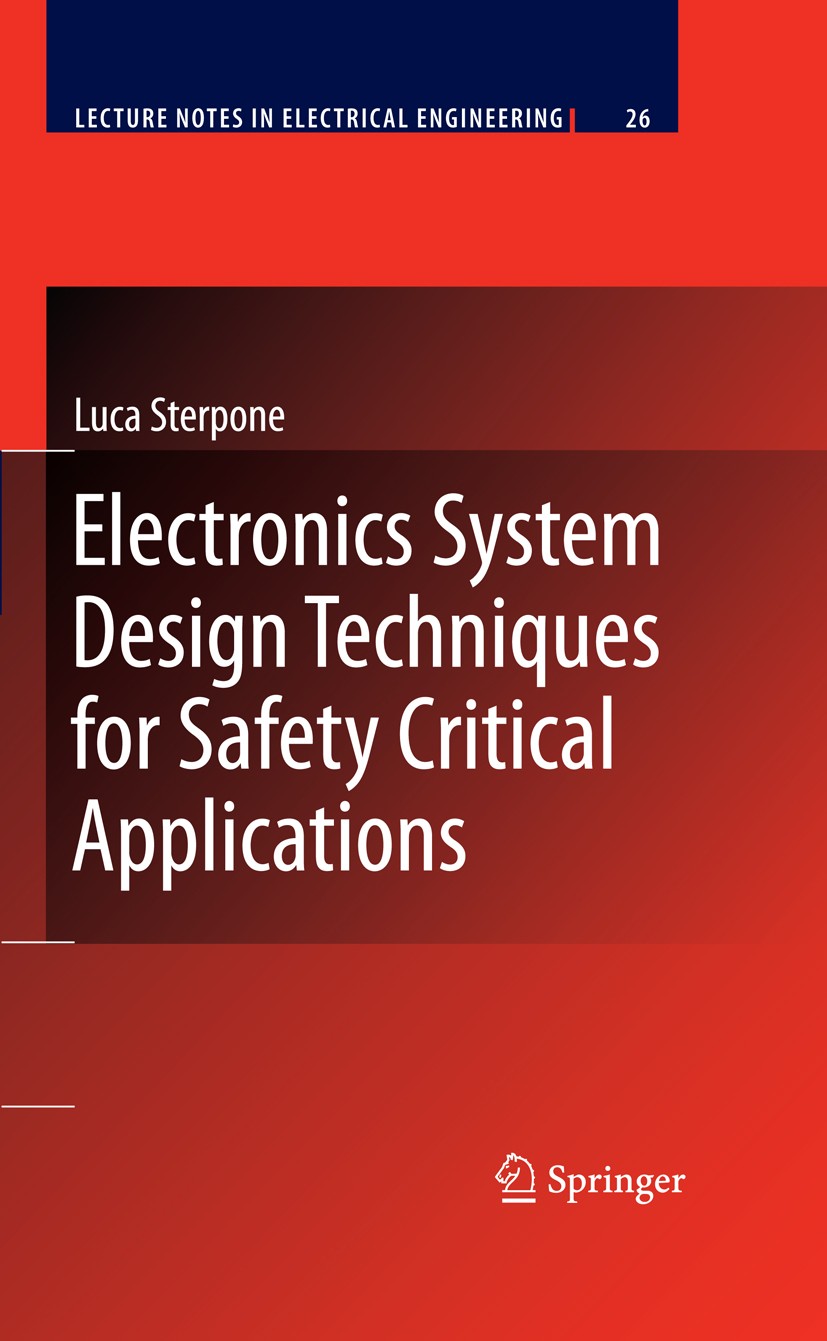| 书目名称 | Electronics System Design Techniques for Safety Critical Applications |
| 编辑 | Luca Sterpone |
| 视频video | http://file.papertrans.cn/307/306483/306483.mp4 |
| 概述 | Novel FPGA design-techniques.Reliability-oriented Place and Route Algorithm.Placement Optimization Algorithm.Static Architectural Analysis |
| 丛书名称 | Lecture Notes in Electrical Engineering |
| 图书封面 |  |
| 描述 | What is exactly “Safety”? A safety system should be defined as a system that will not endanger human life or the environment. A safety-critical system requires utmost care in their specification and design in order to avoid possible errors in their implementation that should result in unexpected system’s behavior during his operating “life”. An inappropriate method could lead to loss of life, and will almost certainly result in financial penalties in the long run, whether because of loss of business or because the imposition of fines. Risks of this kind are usually managed with the methods and tools of the “safety engineering”. A life-critical system is designed to 9 lose less than one life per billion (10 ). Nowadays, computers are used at least an order of magnitude more in safety-critical applications compared to two decades ago. Increasingly electronic devices are being used in applications where their correct operation is vital to ensure the safety of the human life and the environment. These application ranging from the anti-lock braking systems (ABS) in automobiles, to the fly-by-wire aircrafts, to biomedical supports to the human care. Therefore, it is vital that electronic |
| 出版日期 | Book 2009 |
| 关键词 | Gate Array; algorithms; configuration; field-effect transistor; integrated circuit; logic; single-electron |
| 版次 | 1 |
| doi | https://doi.org/10.1007/978-1-4020-8979-4 |
| isbn_softcover | 978-90-481-8041-7 |
| isbn_ebook | 978-1-4020-8979-4Series ISSN 1876-1100 Series E-ISSN 1876-1119 |
| issn_series | 1876-1100 |
| copyright | Springer Science+Business Media B.V. 2009 |
 |Archiver|手机版|小黑屋|
派博传思国际
( 京公网安备110108008328)
GMT+8, 2025-12-27 23:43
|Archiver|手机版|小黑屋|
派博传思国际
( 京公网安备110108008328)
GMT+8, 2025-12-27 23:43


